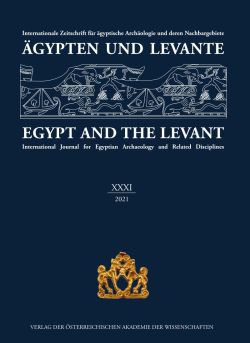
Ägypten und Levante 31, pp. 403-424, 2021/12/28
Internationale Zeitschrift für ägyptische Archäologie und deren Nachbargebiete
International Journal for Egyptian Archaeology and Related Disciplines
The excavations of the Czech Institute of Egyptology, Faculty of Arts, Charles University in the spring of 2018 brought to light a remarkable stela (Exc. No. 1/AS104/2018) with an offering table scene and two engaged statues depicting a couple (Sekhemka and Henutsen). The object also contains a list of sacred oils and two offering formulae (the usual Htp-dj-nswt and an unparalleled one, Htp-dj-nTr). Moreover, the polychromy is partially preserved. The article presents the stela’s archaeological context and description, polychrome reconstruction and discussion concerning its dating and the social standing of its owners. In the context of Old Kingdom art, the stela is interpreted as a peculiar combination of elements pertinent to false doors and statues. Parallels which could help explain these features are scarce. This stela provides evidence for the origin of the false door in early Egyptian shrines, and the subsequent development of two distinct architectural forms, the false door and the statue shrine (naos).
Keywords: Abusir South; limestone stela; Fifth Dynasty; statue niche; engaged statues; offering scene; colour reconstruction; offering formulae; wab-priest of the king; scribe of the treasury; social status; analogies